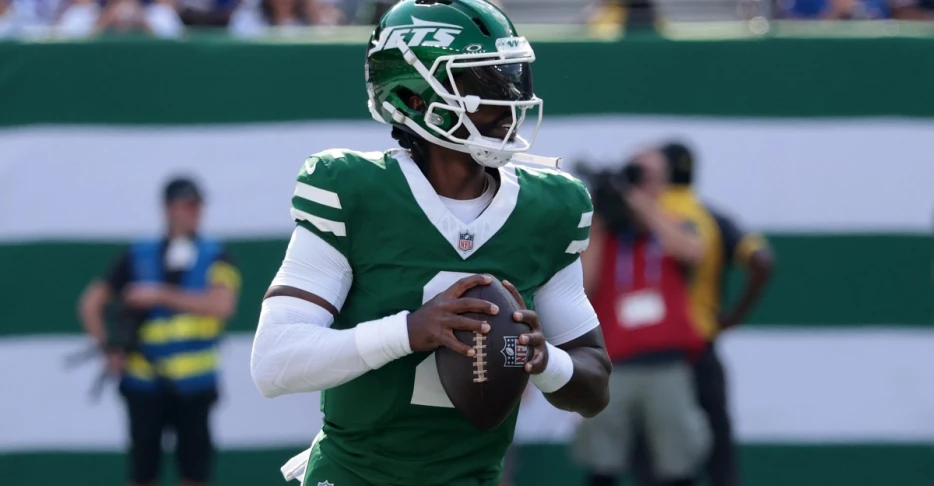
 Gang Green Nation
Gang Green Nation
What has felt inevitable for weeks has finally happened: the Jets and head coach Aaron Glenn have decided to pull the plug on the Justin Fields experience. As a result, Tyrod Taylor will take over as the starter for the immediate future.
Taylor, now 37, hasn’t logged extensive action over the past few seasons, but we can still take away a few things from his play this year and last year to understand how the Jets can best utilize him and what might look different in the offense moving forward. To do so, let’s start by looking at Taylor’s 2023 season, the last time he logged multiple starts in a season.
The 2023 Season:
During the 2023 season, Taylor gave the Giants and their fans a small spark on an otherwise disappointing team. In his five starts, he posted a 2–3 record with a modest 89.1 passer rating and a 48.6 QBR. Among 43 qualified quarterbacks, Taylor finished 20th in EPA + CPOE Composite and 26th in Success Rate. These results were largely not terrible given the supporting cast.
Taylor also had the 6th-highest average depth of target (ADOT) in the league, staying true to his reputation as a deep-ball thrower willing to push the ball downfield. Because of this, he led the league in big-time throws (a Pro Football Focus charted stat), with 8.6% of his attempts falling charted into that category. Think of that as a metric for the throws PFF deems particularly impressive.
Another defining trait: Taylor heavily ignored the middle of the field. Nearly 82% of his drop backs resulted in throws to the boundary — one of the highest rates in football. To his credit, he was effective attacking that area in large part because of his propensity to make splash plays. The chart below shows EPA per drop back by field location: he ranked 8th when targeting the boundaries but 24th when throwing to the middle.
Fields vs. Taylor:
If you squint, you can see why the Jets kept Taylor around as Fields’ backup. On the surface, their differences aren’t that dramatic. Aside from Taylor’s obvious limitations as a scrambler at 37 (even though he could really move in his prime), a lot of their passing tendencies look similar. Both have historically thrown deep at high rates, held onto the ball too long which leads to avoidable sacks, and preferred attacking the boundaries rather than the middle of the field.
One of the biggest critiques of the Justin Fields era was how hard it made evaluating the offensive line and receivers. Fields’ habit of holding onto the ball forever put everyone around him in bad positions. In theory, it shouldn’t be that hard for Taylor to get the ball out faster than Fields, although his game against Tampa Bay where he held onto the ball longer than Fields did on average doesn’t exactly inspire confidence.
Fields currently ranks 40th out of 41 qualified quarterbacks in percentage of drop backs resulting in a throw under...